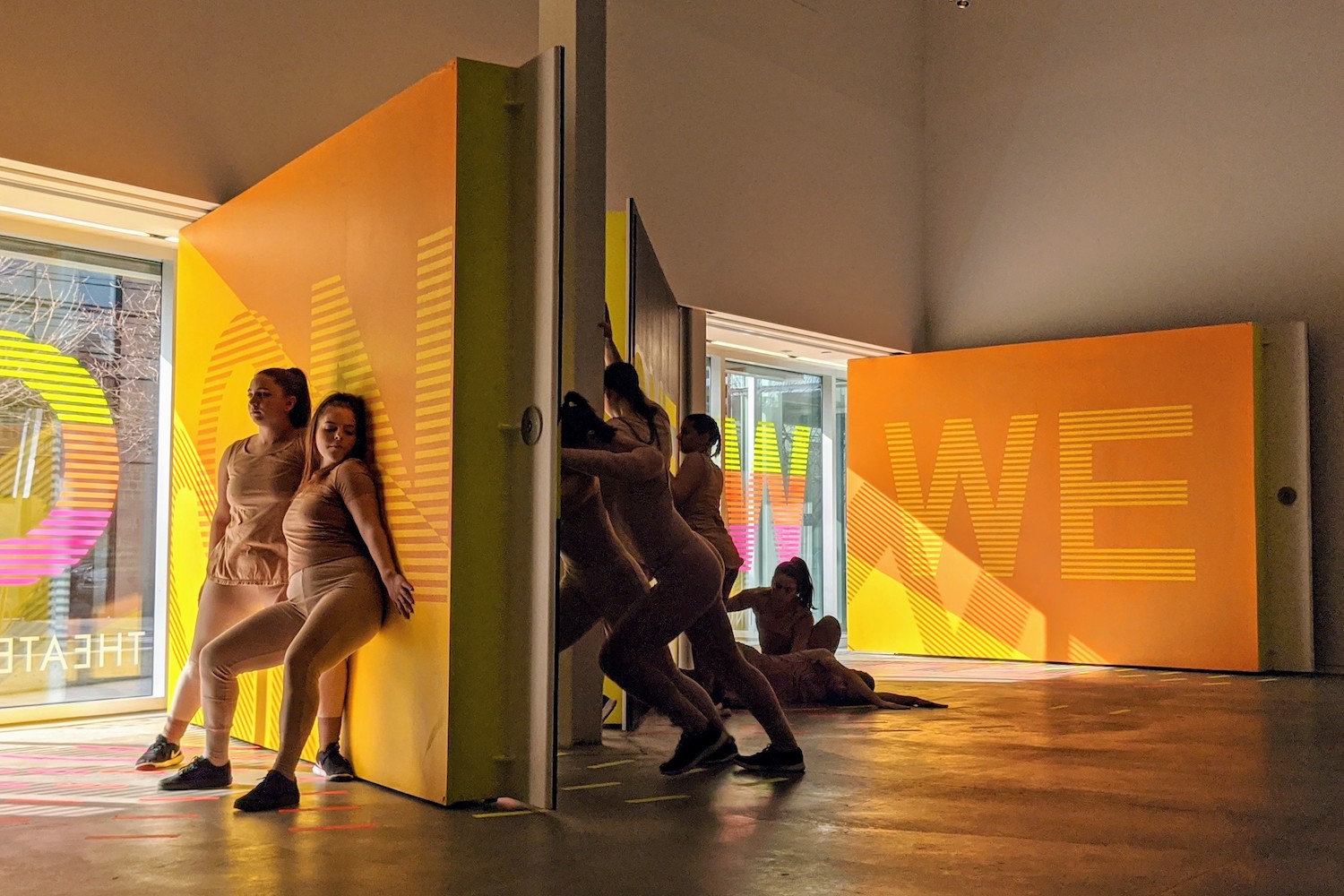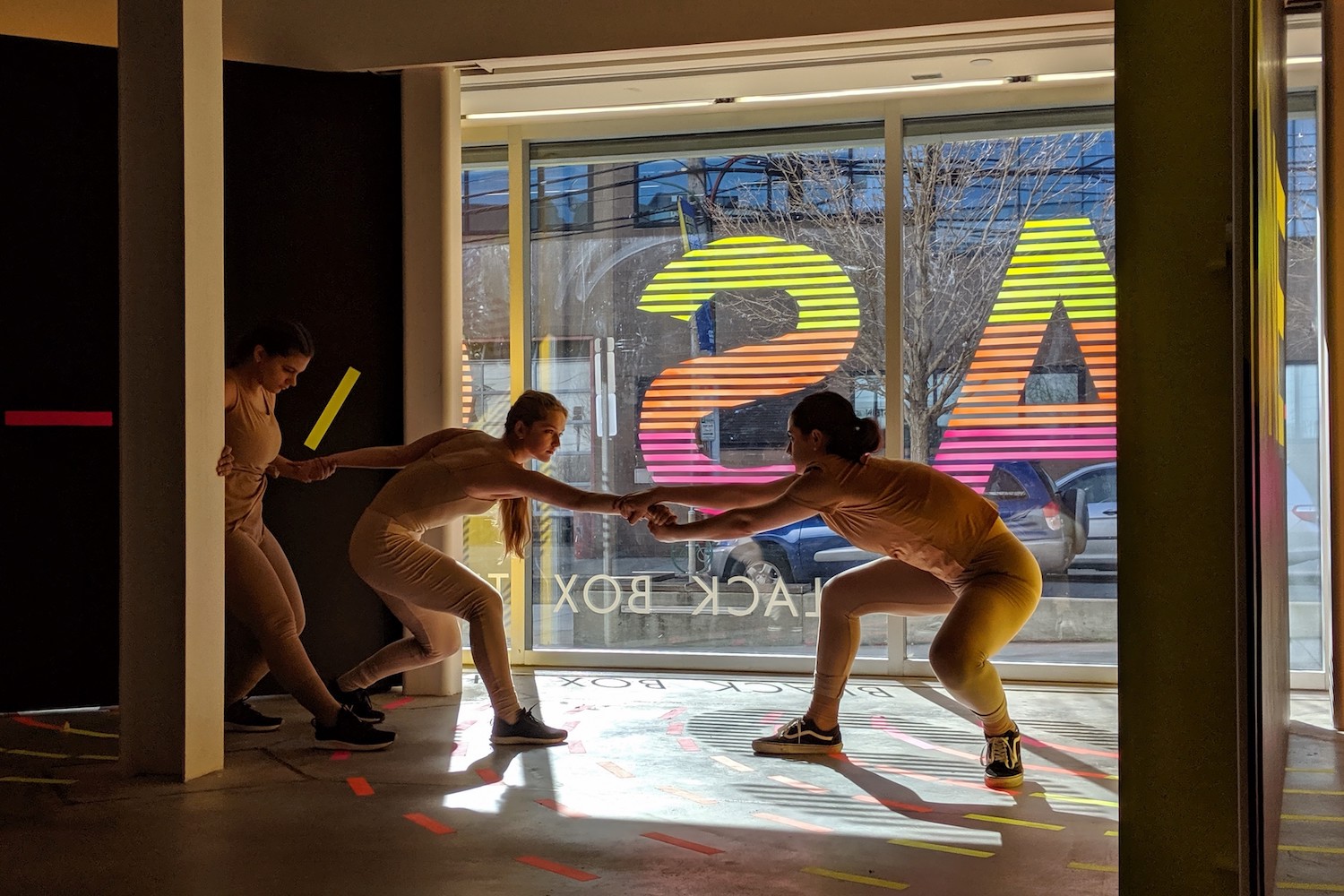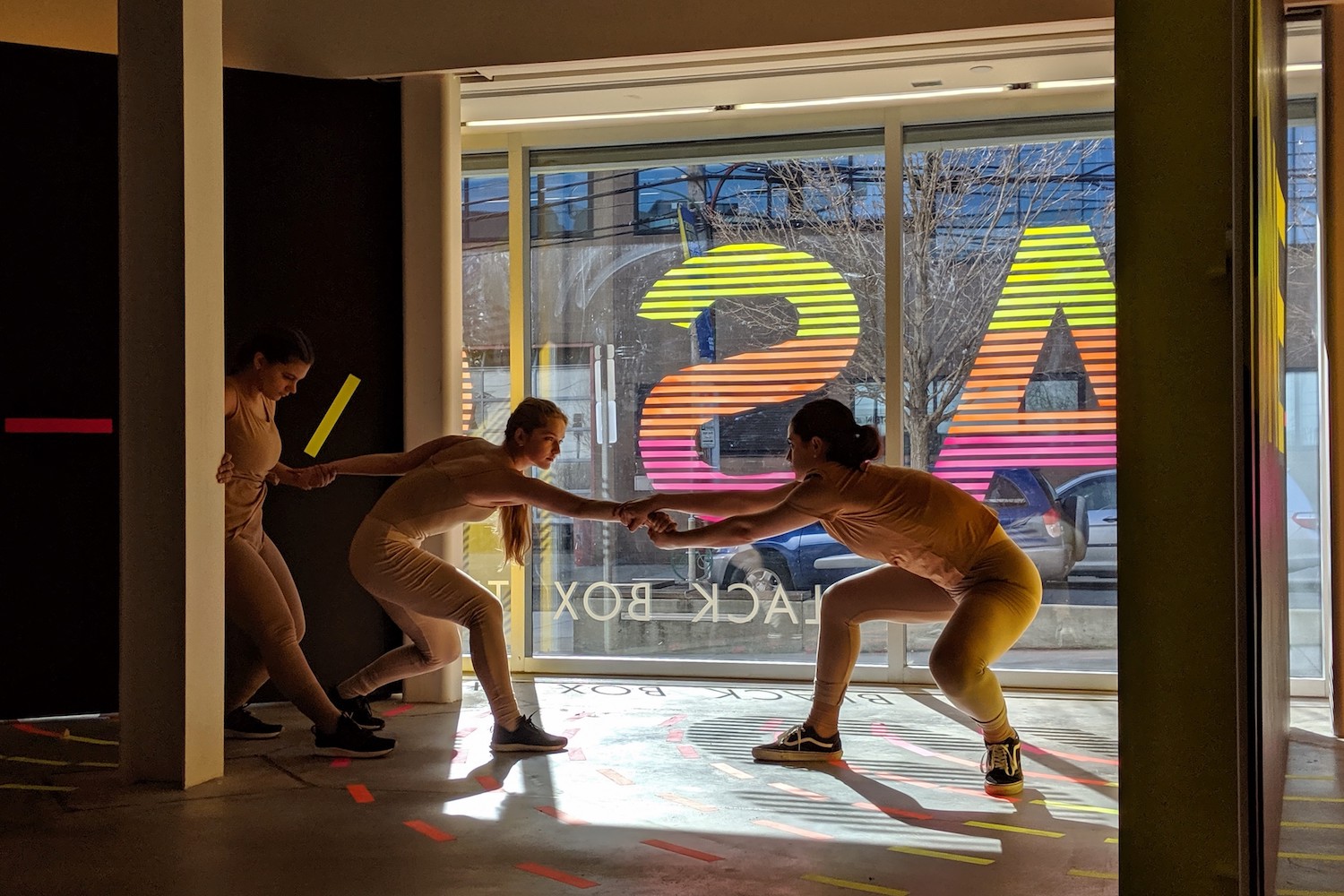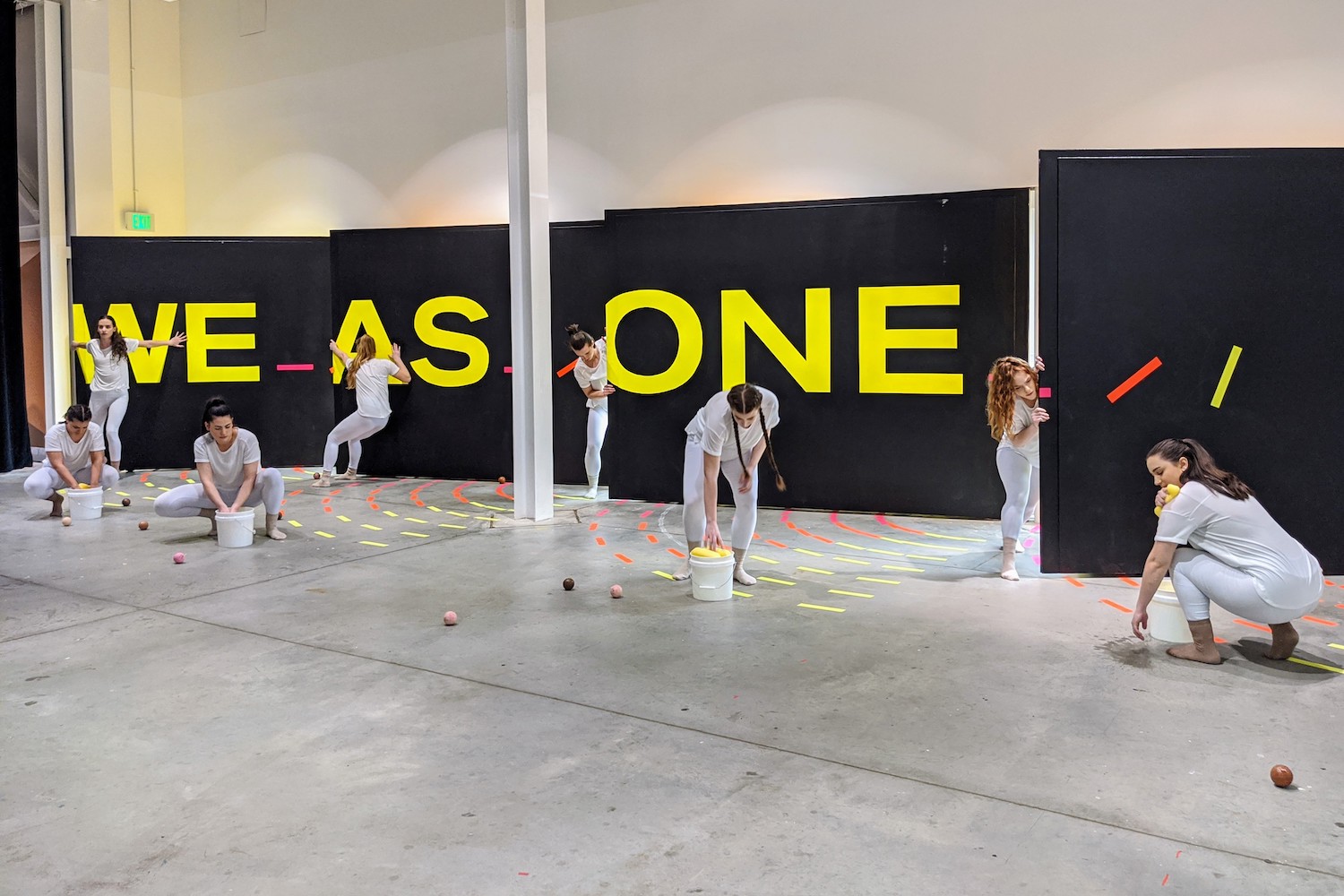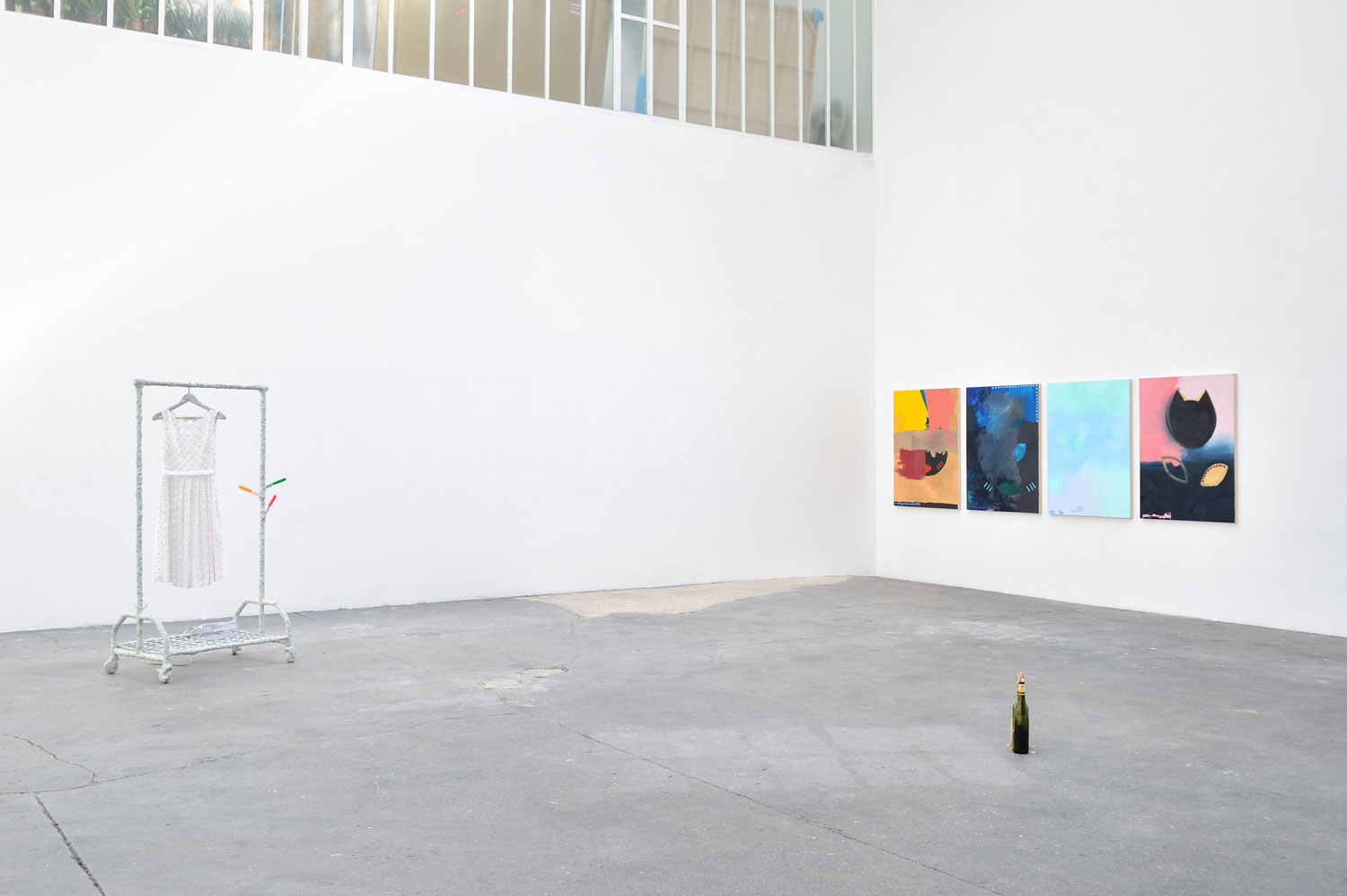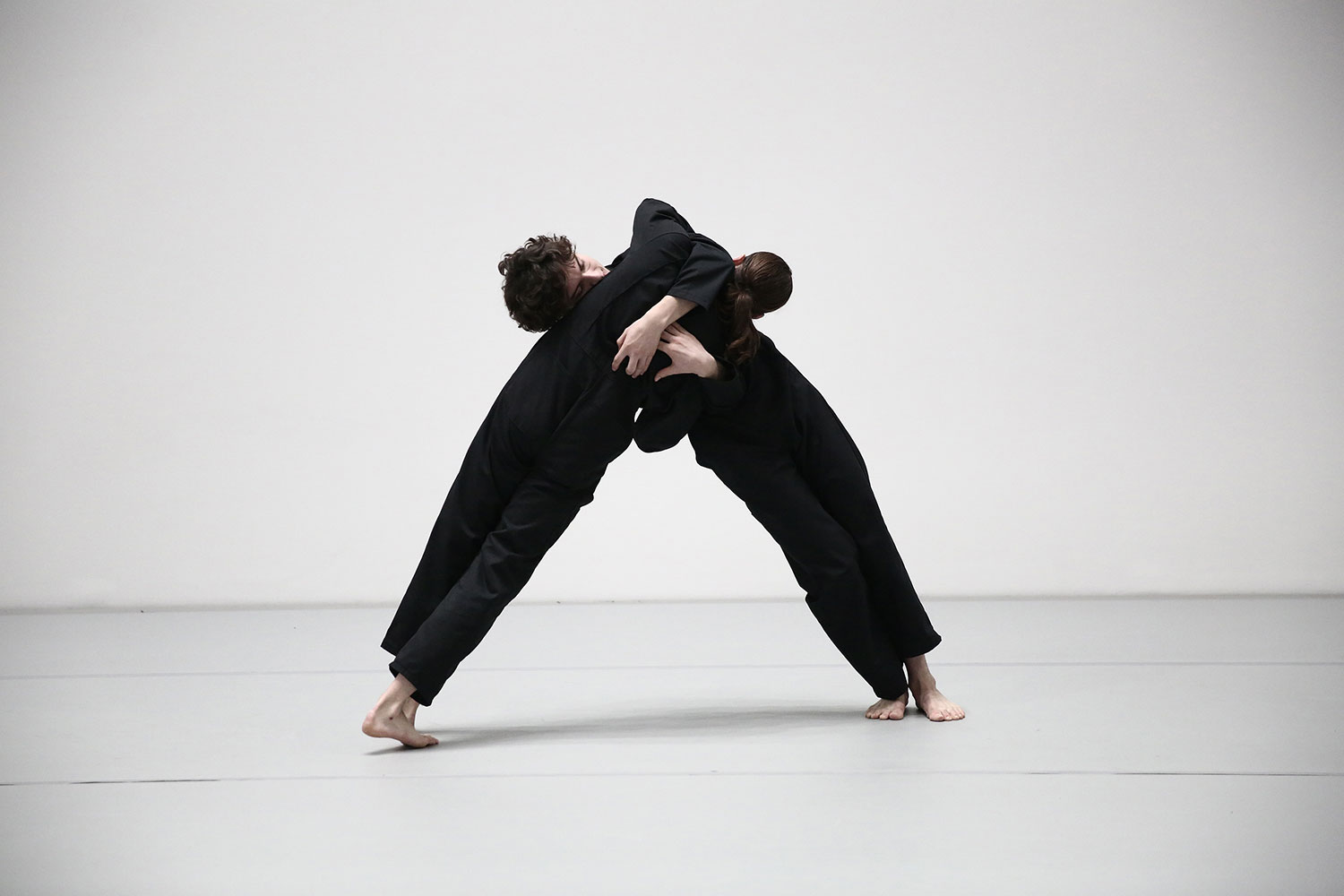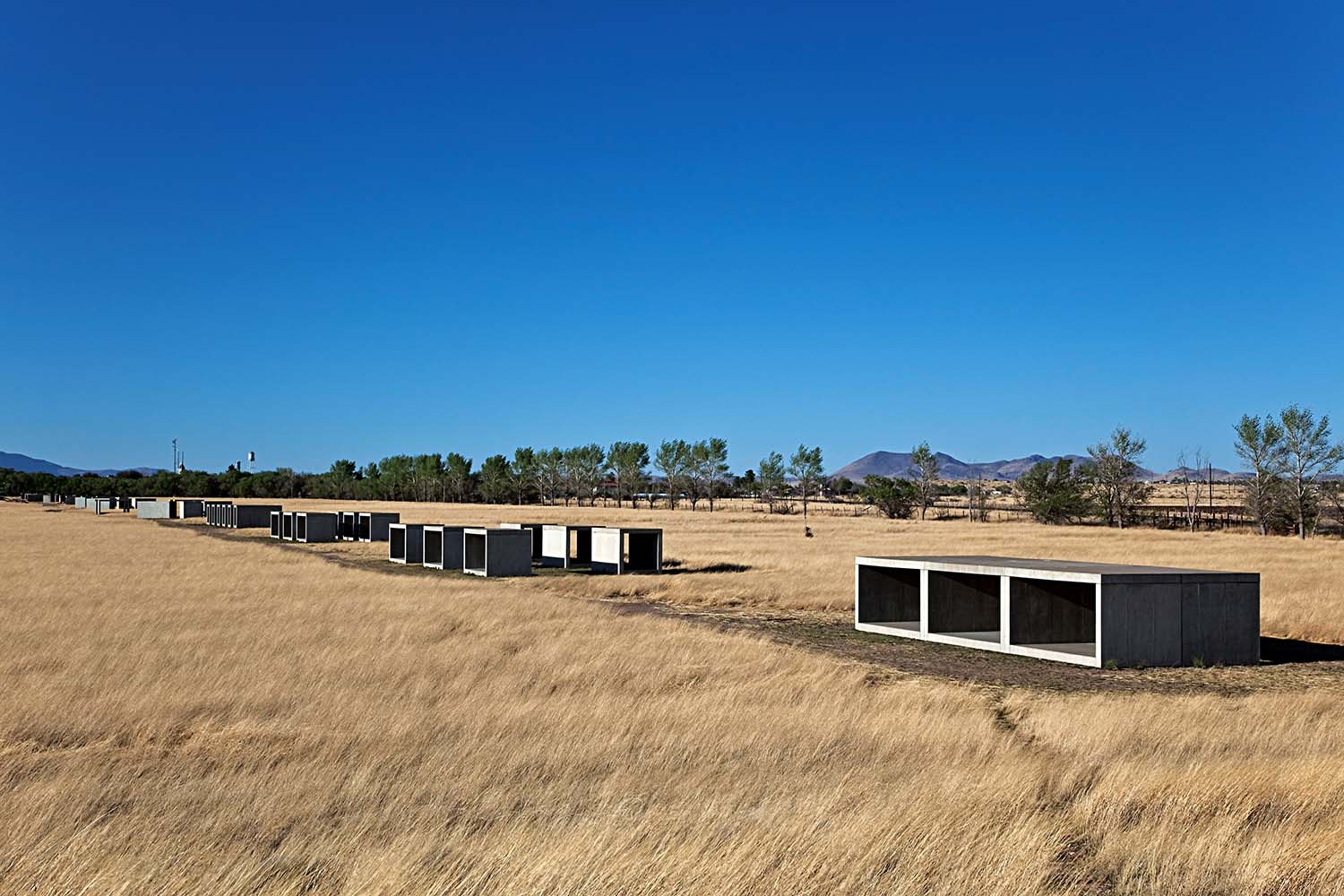Against an expanse of black gallery walls, bright yellow text spells out WE AS ONE. Neon dashes of pink, yellow, and orange tape ripple out in concentric semicircles on the concrete floor. It is a boldly graphic installation — and then walls start to move, and it becomes an interactive, refractive stage.
WE AS ONE is a dynamic, adaptive work by Kenyan-Canadian artist Brendan Fernandes that alters architecture through bodies in motion and text in flux. In a series of evolving weekly performances, the artist — renowned for his hybridized works of dance/art — takes advantage of a typically unseen feature of Drexel University’s Pearlstein Gallery in Philadelphia; its walls open inward, allowing reconfiguration between exhibitions. Here, the physical work of opening and closing the set of twelve-foot walls is enacted by a group of student dancers, making visible the labor of transformation (usually performed by gallery staff between shows), reflecting other forms of erasure in public identity.
The dancers move in near silence, punctuated only by the scuffing of sneakered feet bracing against the industrial floor, the creaking of the massive wall hinges folding slowly inward, the scraping of bare hands scrubbing a wall. They enact an improvisation structure built collaboratively with Fernandes, rather than a strictly prescribed choreography. They struggle, they rest, they clean, they support; stillness and action are entwined. Once opened, the walls reveal windows in which the text WE AS ONE — a reference to traditional labor slogans like “We Move Together” — is repeated, banded in bright color. The light pours in from the street, and the text multiplies, fractured by diagonal lines of paint and cast shadow. The amplified slogan WE AS ONE is echoed by the collective movements of the dancers, further breaking down binary divisions of together/apart, inside/outside, work/rest.
Viewers, encouraged to walk around and through the performance, are equally impacted. With no separation between stage and audience, visitors must navigate the space as a participant, consciously maintaining appropriate distances — to displayed artwork, to other-ed bodies — creating another unseen structure for movement. The instinctual choreography of affective labor is revealed — of moving as a body through architectural space, amid social conventions, among other people. The artist draws attention to a complex dance we are all performing in this shared space, destabilizing the roles of artist, worker, and audience. Employing extensive collaboration between dancers and designers, Fernandes further subverts the hierarchical structure for creative production.
WE AS ONE — like the collective movements it references — invites a sense of solidarity through flux. The dancers do not move in unison as they work; they flock or swarm, aware of their part within the whole, task by task. Their costumes are individualized uniforms. During daytime performances they span an array of beige. In the final performance, the value shifts. Now clothed in white, the female dancers are extensions of the gallery walls, moving through their improvised routine. On this night, they perform a new ritual. Working with sponges and communal buckets, they squeeze water onto themselves and each other; they vigorously wipe and scrub away the text, WE AS ONE, using their hands and their bodies. Through the strenuous, physical process, the neon paint transfers to their clothes. The bold streaks of color are simultaneously proof of their labor and remnants of their erasure. Their expressive, intentional movements, visible from the street level windows, are reflected in puddles of water on the gallery floor, refracted and further fragmented, multiplied.
After the performance is over, someone will come into the empty gallery to mop up the pools of water. Their work — although unseen — has been noticed. It is work performed by a human body moving through the architecture, one action at a time, pushing silently forward. In WE AS ONE, Brendan Fernandes creates a moving monument to invisible work and the bodies that perform it, challenging the social and economic structures that circumscribe them.

